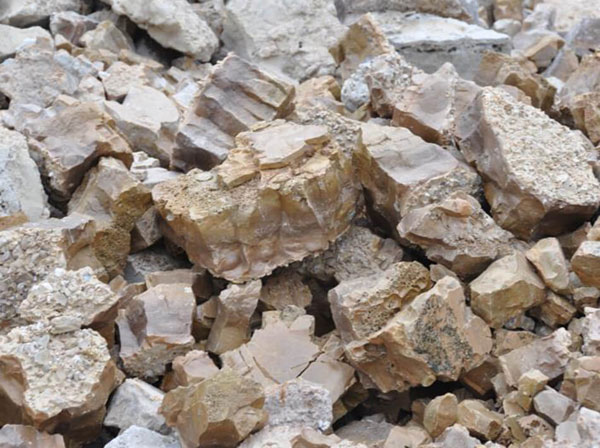
Calcium aluminate is a mineral that is created from a variety of raw materials. In addition to its slag-making functions, it has significant deoxidation and desulfurization properties. Despite its low melting point, calcium aluminate exhibits a wide range of properties.
The X-ray diffraction of the sintered calcium aluminate refi ning slag was performed using a confocal scanning laser microscopy technique. The calcium aluminate inclusions were found to be irregular and exhibited low rotational speed. This resulted in a shorter total dissolution time.
The X-ray elemental maps of the slag show the concentrations of several elements. Calcium, Al2O3, and Silicon are more concentrated in the brighter structure, whereas magnesium is dispersed in a uniform pattern. The slag has a main structure, the C12A7 phase, which contains more aluminum than any of the other phases. Silicon and titanium are confined between large C12A7 grains. In between these two phases, complex oxides are present.
X-ray diffraction of the sintered calcium aluminate refi ning slag is a powerful technique for studying the structure of a mineral. This method allows researchers to determine the structure of a substance without the use of a microscope.

In this study, the calcium aluminate refining process is studied using X-ray diffraction. We found that the slag contains three phases: C-CB-FC (light grey), A-FC (dark grey), and S-CB-FC (dark blue). Among them, the S-CB-FC phase contains the calcium aluminate phase (C5A3).
The X-ray elemental mappings of slag show that it contains 50% Al2O3, 12 wt. p.c. SiO2, and 38 wt. p.c. CaO. The main structure, C12A7, contains more aluminum than the other phases. The main structure in the G-Slag, on the other hand, contains higher amounts of silicon and titanium. This result shows that there are a considerable number of pores in the slag.
The slags were mostly composed of CaO and Al2O3, with a small amount of iron. The slags produced from graphite or Al2O3 crucibles contained a higher concentration of Al2O3. It is likely that this was due to the poor separation of the metal from the slag.
Leachability of calcium aluminata refining slag is affected by the composition of its constituent phases. High CaO content favors the formation of gypsum and leads to high acid consumption. It is possible to control the levels of CaO in the slag by controlling the phases of the slag.
The composition of the slag is characterized by the occurrence of CaO and Al2O3 in the dark slag. The bright slag is composed of a considerable amount of TiO2 and Al2O3. The dark slag shows a low CaO content, while the bright slag shows higher CaO content. The slag is also high in Al2O3, SiO2, and TiO2, which indicate that it has significant pores.
The composition of bauxite is important in determining the leachability of the slag. A high ratio of Al2O3 and CaO3 results in better leaching than low ratios. Low CaO/SiO2 mass ratio causes a higher viscosity at elevated temperatures and lower Fe removal. However, high SiO2 content of bauxites can result in silicon loss through SiO gas formation.
The characteristics of a calcium aluminate refining, or CaAlO3, slag are crucial to the steelmaking process. They ensure that the steel produced is clean and of high quality. Moreover, they influence the efficiency of the steel refining process. For optimal performance, slags must possess the necessary physical properties such as low melting temperature, low viscosity of liquid slag, and optimum fluidity. Usually, the calcium aluminate slag comprises of two major components - Al2O3 and CaO.
Calcium aluminate slag has high chemical properties and high density. Its melting point is low, its rate of slag formation is fast and it contains no fluorine. Besides, it is compact and easily stored. Its unique characteristics make it a good candidate for steel refining.
Characteristics of a fluid calcium iodide refining slag are the slag's CaO and Al2O3 mass ratios. A higher ratio will produce more Al2O3-containing leachable phases. The cooling rate also plays a part in the slag's characteristics, and a slower cooling rate will produce a slag with better characteristics.
X-ray elemental mappings of the slag are presented in Figures 5 to 7. It can be seen that several elements are more concentrated in the bright area than in the dark region, with magnesium dispersed uniformly. The G-Slag's main phase (C12A7) contains more aluminum than other structures, and the other phases are populated with silicon and titanium. In between these two main phases, there are also complex oxides.
XRD analysis can also be used to identify the slag's phases. The B-Slag is composed of C2AS, a primary phase, and CaO*Al2O3 (CAS). The B-Slag's secondary phase is C5A3, a highly unstable phase. At high temperatures, it can reconvert into C12A7. The I-Slag, on the other hand, consists mainly of the CAS phase.

Write a Message